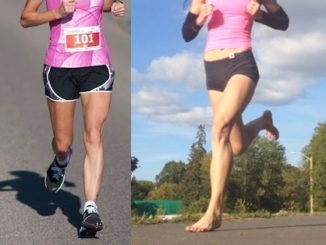
Is Forefoot Running Better for Energy Economy than Heel Striking?
One of the many reasons metabolic costs in running is lower when a forefoot strike is employed is due to the improvements in upper body posture and knee-joint angles at landing. These key improvements were found to prevent a force-intensive over-stride and excessive bouncing which reduced muscle force generation, while making the ankle better at translating more kinetic energy as compared with heel strike running, which was consistently found to produce shockwaves that can damage the shin, knee, lower back and energy economy!





